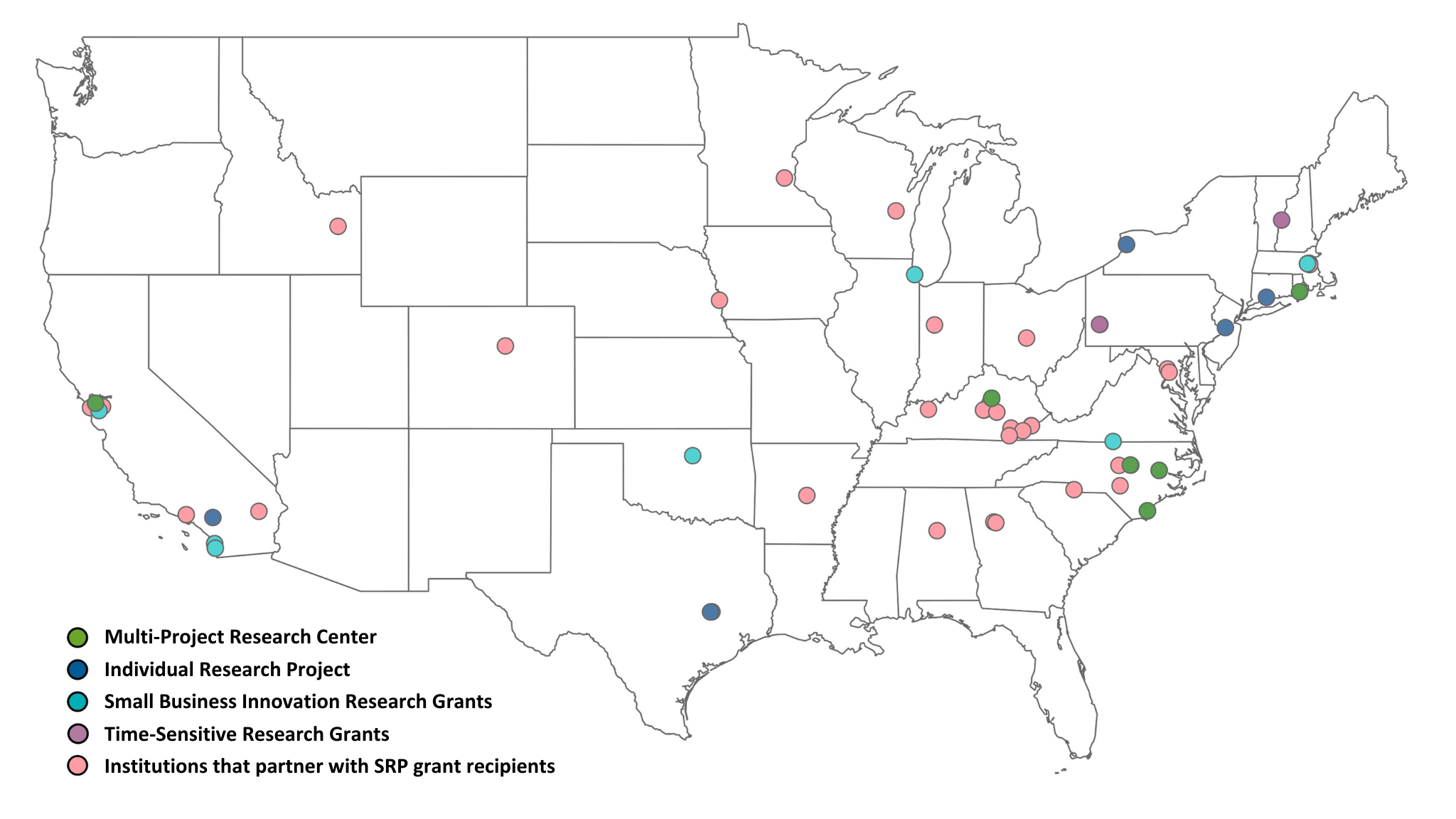Superfund Research Program
January 2024
By Dylan Williams

The NIEHS Superfund Research Program (SRP) recently brought together several grant recipients and experts from other federal agencies to discuss new strategies and continuing challenges for PFAS site characterization. The three-session event, Tools for PFAS Site Characterization, included presentations on research efforts and tool development for sampling, monitoring, detecting, and characterizing PFAS. The widespread commercial use and the variety of risks of PFAS make site characterization important to researchers, who need to know which PFAS chemicals are where.
PFAS are found in the nation’s food, soil, and water. The stable bonds between carbon and fluorine atoms in PFAS mean these compounds resist breaking down in nature.
In addition to these webinars, NIEHS has contributed to PFAS research efforts via its involvement in the National Academies’ Guidance on PFAS Exposure, Testing, and Clinical Follow-Up, the National Science and Technology Council’s PFAS Report, and the Federal Remediation Technologies Roundtable’s Fall 2023 General Meeting: Recent Advances in PFAS Characterization TechnologiesFall 2023 General Meeting: Recent Advances in PFAS Characterization Technologies.
PFAS exposure has been linked to adverse health effects, including cancer, liver disease, reproductive disorders, and obesity. There are thousands of PFAS compounds, with known and unknown chemical compositions, and their differing properties may affect their potential health effects and environmental pervasiveness.
The Tools for PFAS Site Characterization series, hosted in partnership the U.S. Environmental Protection Agency (EPA), included:
- Session I – Novel Analytical Chemistry Approaches for PFAS featured SRP-funded investigators working on innovative methods to classify and/or quantify PFAS compounds.
- Diana Aga, Ph.D., State University of New York at Buffalo
- Erin Baker, Ph.D., University of North Carolina at Chapel Hill
- Lee Ferguson, Ph.D., Duke University
- Session II — PFAS Sources and Mapping highlighted case studies featuring SRP-funded research to understand PFAS sources and to predict fate and transport.
- Mark Brusseau, Ph.D., University of Arizona
- Matt Farrell, North Carolina State University
- Carla Ng, Ph.D., University of Pittsburgh
- Session III — Standards, Passive Sampling, and Modeling of PFAS included federal and SRP-funded researchers featuring useful resources that can aid in site characterization, such as PFAS reference materials, libraries, and passive samplers.
- Jessica Reiner, Ph.D., National Institute of Standards and Technology
- Jacqueline Bangma, Ph.D., U.S. EPA
- Jitka Becanova, Ph.D., University of Rhode Island
Recordings and downloadable presentation slides from the sessions are now available. The links above go to the EPA CLU-IN session archives which host the speaker bios, presentation materials, and webinar recordings.


